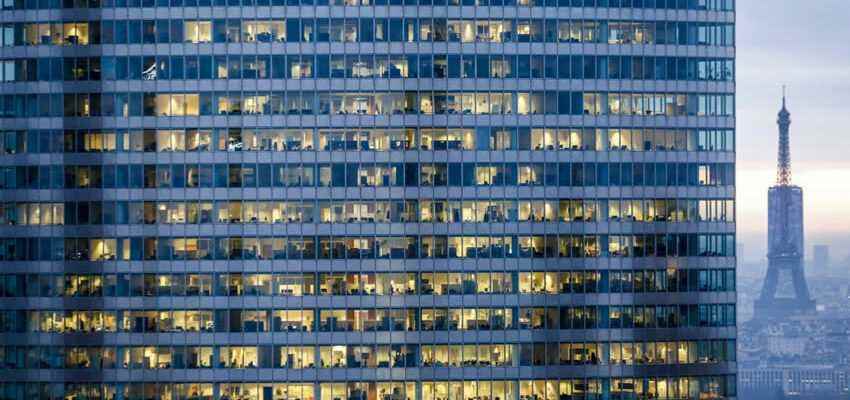by Benjamin Mallett
FLAMANVILLE, Manche, June 16 (Reuters) – At the site of EDF’s EPR-type nuclear reactor project in Normandy, a banner strung at the top of a building near a crane and an water under construction, sets the course with a note of optimism: “Last straight line to start Flamanville 3 in complete safety, in complete safety.”
While the EPR must start producing electricity on the network at the end of 2023, the public electrician and the French State, its 84% shareholder, hope that no new difficulty will hinder the good start of the reactor, which is already more than ten years late and billions in additional costs.
“Today I feel an effervescence which begins to appear on the ground with people who see the last straight line. We are in the final sprint and with each passing week we feel this positive tension which increases”, declares Alain Morvan, who has been leading the project since early 2020.
“Everyone is waiting for the end of the EPR construction site (..). I think it’s good for French industry and it’s good for EDF that we finish this project, which has encountered difficulties “, he also told Reuters on Tuesday during a press visit.
Located at the foot of a granite cliff overlooking the English Channel, at the end of a Normandy bocage area dotted with electricity pylons, the EPR Flamanville 3 project was to be the showcase for the revival of French nuclear power thanks to a model of a safer, more powerful and more durable reactor that would make it possible to renew an aging fleet and target new international markets.
Instead, it has become the symbol of serious difficulties that EDF is trying to correct and which did not deter Emmanuel Macron from announcing, in February, a program estimated at 52 billion euros to build in France. six EPR 2 type reactors – a version presented as simpler and cheaper to build – with the possibility of eight additional reactors.
DON’T “LEAVE ANYTHING OUT”
This announcement took place two weeks before the Russian invasion of Ukraine, which came to aggravate the crisis and the energy surge in Europe.
The Head of State, subsequently re-elected in April, thus asked EDF to play a major role in reducing the country’s CO2 emissions and in its security of supply by also extending operation as much as possible. of its existing nuclear power plants, which provided 69% of the country’s electricity production in 2021.
The Flamanville EPR, which will be able to produce at full power the annual quantity of electricity necessary for a city like Paris, was estimated at three billion euros and was to start in 2012 when the project was announced in 2004.
But problems with skills, organization, monitoring of the site and the quality of manufacture of certain parts, in a context of increased safety requirements, led to multiple delays and budget drifts for the project.
According to the latest information provided by EDF, in January, the construction cost of Flamanville 3 is now estimated at 12.7 billion euros and the loading of its fuel, one of the last stages before it produces electricity, should take place in the second quarter of 2023.
Welding repairs constitute the last major difficulty to date of the project and today mobilize nearly 800 people, out of a total of some 3,000 workers present on the site. Out of 122 faulty welds, 60% have been repaired and around fifty therefore remain to be repaired.
“I have the weakness to believe that we have sufficiently analyzed the situation to have no more surprises. It is important that we finish without leaving anything aside, with the maximum quality and on time”, declared Alain Morvan .
NEIGHBORS WATCH
The project is being scrutinized by France’s European neighbors. In Great Britain in particular, where EDF is building two EPRs at Hinkley Point – also late and more expensive than expected – but also in cross-border countries such as Italy and Germany, which rely on electricity exports from the ‘Hexagon.
EDF is facing structural financing difficulties prompting the government to consider a complete renationalisation of the group, which would be reorganized in depth after a first attempt put on hold last summer. According to sources interviewed by Reuters, the operation could go through a buyout of shares held by minority shareholders.
The group is also suffering from the unavailability of around half of its historical nuclear fleet due in particular to corrosion problems on certain reactors which have led it to revise its production forecasts several times downwards. The impact on its earnings before interest, taxes, depreciation and amortization (Ebitda) is estimated at around 18.5 billion euros this year.
EDF also has to deal with the government’s decision to force it to sell more nuclear power at low prices to its competitors to limit the rise in electricity prices, a measure which risks being renewed for 2023 and whose impact on its 2022 Ebitda reached for its part some 10 billion euros.
While the group had to carry out a capital increase of 3.16 billion euros at the beginning of the spring, to which the State subscribed up to approximately 2.7 billion, the French Minister of the Economy and Finance, Bruno Le Maire, said on Tuesday about a possible nationalization that “all options are on the table”.
“The general opinion on EDF is improving thanks to a series of positive signals and comments from the French authorities on the growing potential for nationalization”, according to Nicolas Bouthors, analyst at AlphaValue.
“A minority buyout at a significant premium to current value is once again attracting speculative interest from investors after they dumped the stock due to operational and regulatory issues.” (With Valentine Baldassari in Gdansk and Silvia Aloisi; editing by Sophie Louet)
